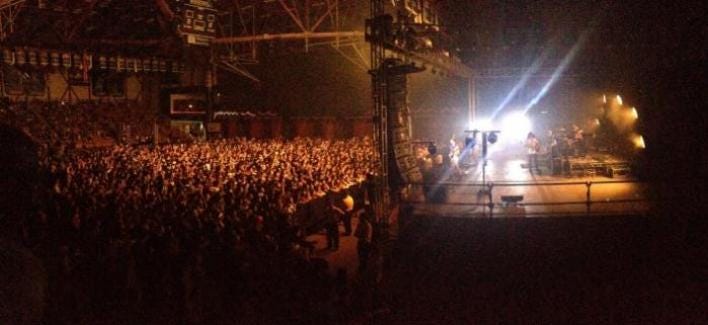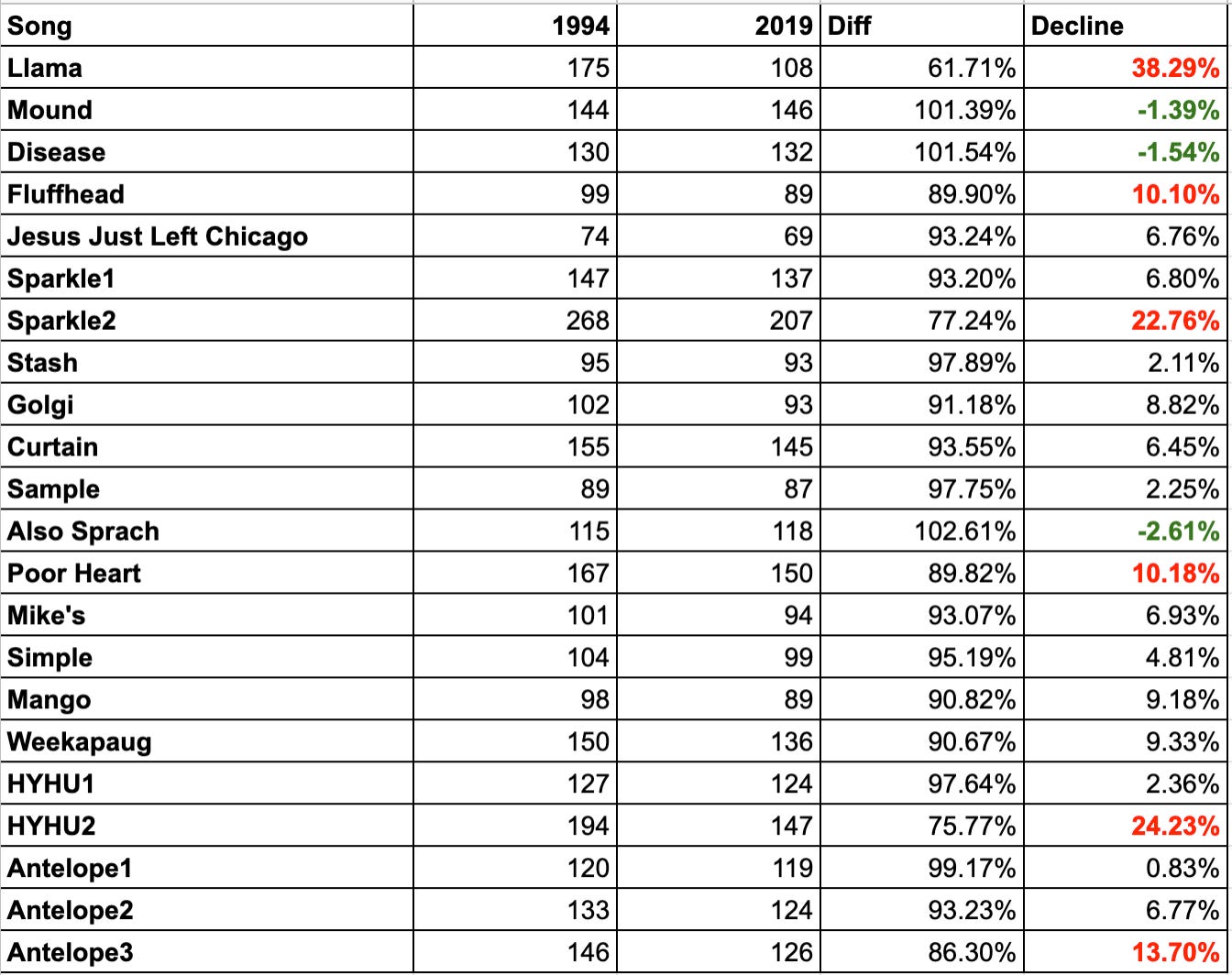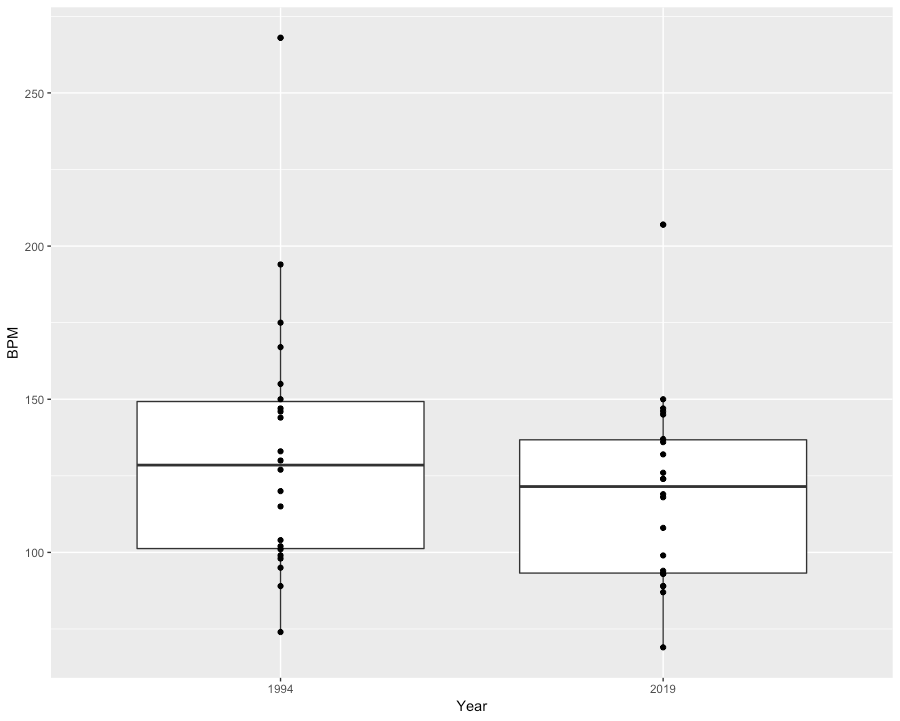
Keeping up with both 1994 Phish and 2019 Phish this week has been quite the whiplash experience. I’m not going to fall into the obvious trap of comparing the two eras on quality; a quarter-century has produced a very different band, full of very different people and sounds, even if they’re playing some of the same songs. But it’s pretty disorienting to jump from a boomy audience recording in a California college gym to a live HD webcast with soundboard audio from an East Coast hockey arena.
Musically, one of the biggest differences is sort of an elephant in the room among Phish fans: tempo. It doesn’t take a musicology degree to notice that today’s Phish plays slower than they did when they were feisty twentysomethings. It’s especially apparent on once-blistering songs such as Antelope, Chalkdust, or Llama — which got a whole new, gooier arrangement to compensate. Unless you’re showing up to Phish shows to headbang, this more easygoing approach shouldn’t be a dealbreaker, and Phish’s overall BPM certainly hasn’t declined as much in three decades as certain other long-running jambands did. But it’s still a notable aesthetic difference that changes the experience of a Phish concert, whether you’re there or just following along from the couch.
But just how much have the tempos changed in the last 25 years? I thought I’d do a little study, comparing the songs played on this date in 1994 (when they’ve got a little extra pep in their step after a day off on the beach) to their most recent 2019 appearance. To do so, I had to measure the beats-per-minute of each version, and since the automated BPM counters out there don’t play nice with AUDs or longform Anastasio compositions, I did it my dang self using this Tap BPM tool. Please note that I’m no drummer, and that Phish song structures don’t exactly lend themselves to easy beat sampling, but I think I arrived at numbers that are close enough for a casual comparison. Here’s the table:

To explain the less obvious rows, I split a couple songs up to separately measure different sections: the start and end speed of Sparkle, and the three main movements of Antelope. HYHU1 is the version before the Fish song, HYHU 2 is the reprise after. Red marks the biggest declines in BPM, while green marks the few songs that were (very slightly) faster in 2019 than 1994. I tossed out the songs from 12/6/94 that haven’t appeared in 2019 yet; if we somehow get an acoustic Foreplay/Long Time before the end of the month, I’ll be sure to go back and update it the chart.
On average, 2019 Phish is about 8.5% slower than they were in 1994; 7% if you don’t count Llama. I think many fans might be surprised to see how mild the decline is for most songs; generally, between 6 and 10 percent, which is certainly noticeable but not a collapse. The eye-popping declines are only found in special cases: Llama, which as I mentioned before has a new, intentionally “slow” version now, and the joyride moments at the end of Sparkle and the post-Fish HYHU.
The next batch is a little more interesting. Poor Heart has always been one of the fastest Phish songs, and potentially marks top speed for Fishman across eras; in that case, a 10 percent decline is understandable, but 150 bpm ain’t too shabby for a 54-year-old. Fluffhead is very challenging to play and travels (sorry) all over the place, so starting it slow is probably a wise decision. Antelope is maybe the one to fret about, given that the whole thematic goal of the song is to find higher and higher gears (again: sorry), and the tempo across the three segments isn’t just down...it’s flat.
That narrower range of Antelope in 2019 is also echoed on another scale: across the entire show. It’s a bit of a fuzzy comparison, since the 2019 versions are taken from multiple shows instead of a single date, but for the same set of material, it feels like the range of BPMs is broader in 1994 than 2019. Let’s get another boxplot goin’!

Even more than the general decrease in tempo, this tighter distribution of BPM might explain why today’s Phish shows feel so different from yesteryear’s. In 1994, Phish still liked to give every night’s crowd a full sampler of what they could do, which usually translated to a wide range of tempos: the hyper-prog of The Curtain dropping into the more deliberate Sample, or chasing the molasses-blues of Jesus Just Left Chicago with the gas-pedal hijinks of Sparkle. In 2019, Phish tends to stay within a comfortable 90-125 BPM range for the whole show, less a rollercoaster, more driving over rolling hills.

That’s not necessarily a bad thing. As I talked about the other day, Phish in 1994 had pretty much one kind of show they could play, and the frequent changes in speed were part of that approach, actively working against any kind of set flow on most nights. The Fall 2019 tour hasn’t exactly featured smooth, organic setlists thus far, but the option is now there for the band to pick a mood — and the tempo that goes with it — to focus on for at least an extended portion of the show. As us old people know, it’s okay to slow down sometimes.
[Stub from Golgi Project.]


